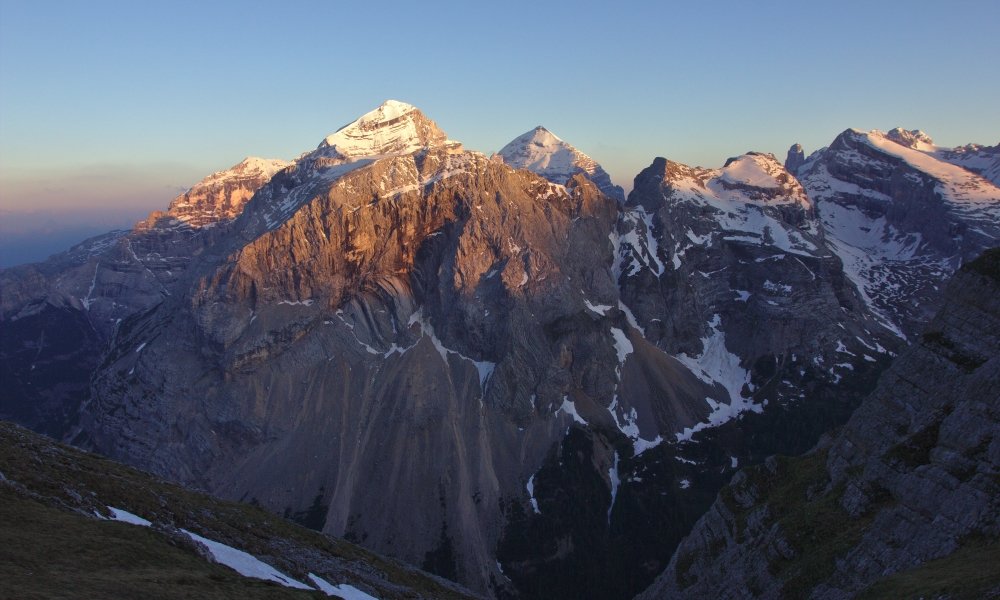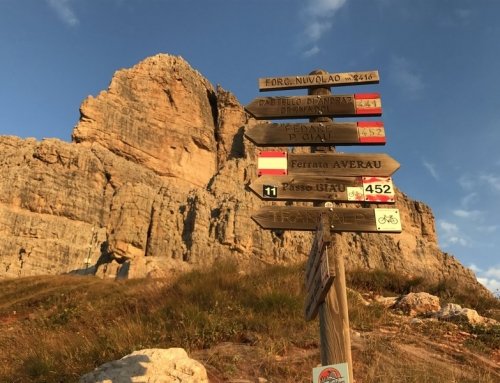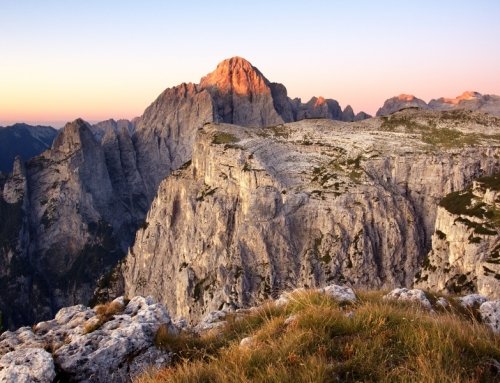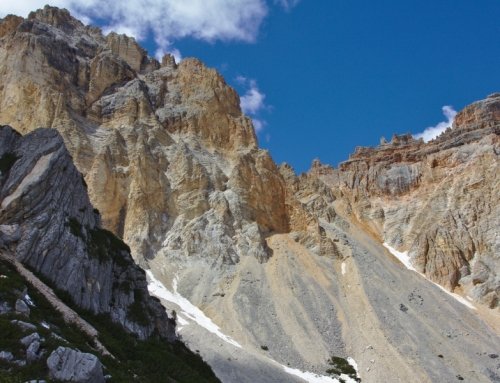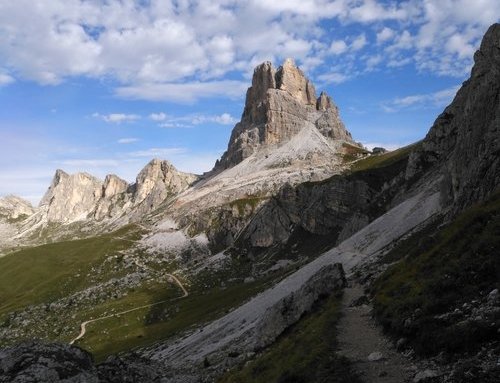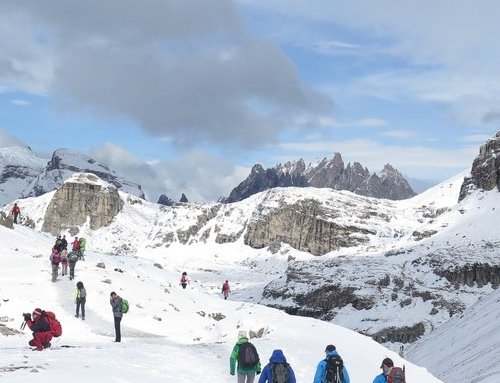1857 may well mark a turning point in the story of the local people inhabiting the region we now call the Dolomites. The word history may be too presumptuous given the very limited scope of these changes. But changes they were, jump started by a Cambridge educated geologist and botanist by the name of John Ball (Dublin 1818- London 1889). Since early on he traveled extensively in the alpine region doing botanical research and engaging in climbing and hiking activities. He was the first to officially reach the top of Mt.Pelmo accompanied by a local guide. The year is 1857. A ledge in the Pelmo is called “cengia di Ball” and there are various plaques honoring his name scattered across the Dolomite mountains.
He went on to write Ball’s Alpine Guides, three volumes published between 1863 and 1868, the latter on the Eastern Alps and the Dolomites.
It is almost certain that locals had already climbed Mt.Pelmo and many of the sorrounding peaks before Ball, but the uniqueness of his action is that it was done with the intent to explore, study and write about these places.The Dolomites were a harsh place to live and most activities were focused on getting enough food on the table. Most mountains did not have a name, and if they did, most would not care to remember it. Let me quote from the great bookUntrodden Peaks and Unfrequented Valleys written by Amelia Edwards and published in 1873.
“The peasants of the mountain district between Agordo and Primiero seemed, so far as one could judge in a single day’s journey, altogether poorer, dirtier and more ignorant than elsewhere…..even the lady at the Gosalda (sic) albergo…had no kind of local information to give. Being asked the name of the noble mountain that formed the main feature of the view before her windows, she replied first that it was the Monte Cereda; then that it was the Sasso de Mis; and finally admitted that she did not know for certain whether it had a name at all. ….the mountain however, as set down in Ball’s map, proved to be the Monte Prabello”.
The Dolomites came to light. Scholars, adventurers, naturalists, artists, painters and writers soon came to discover this corner of the Alps, and it happened quickly.
Between 1861 and 1863 two English friends traveled the region extensively and wrote a book called The Dolomite Mountains. George Churchill was a geologist and his pal Josiah Gilbert an artist. The ensuing book was adorned with beautiful paintings and it represented the first in-depth description of the Dolomites.
In that same period (1862) a young Austrian lawyer by the name of Paul Grohmann arrived in Cortina d’Ampezzo for the first time. It was love at first sight. He would spend the better part of his life concentrated on mountain activities mostly centered in the Dolomites. In 1873 he was granted honorary citizenship by Cortina by virtue of the multiple activities he helped develop including founding the Guide Alpine. This was followed in 1875 by a detailed map of the Dolomite Alps and two years later of the travel book Wanderungen in den Dolomiten.
Word was spreading around and it would have a lasting impact on the lives of the local population. Agriculture slowly gave way to tourism. Cortina d’Ampezzo was without question the main beneficiary of this change. Its first records date back to 1876 and show the arrival of almost 10.000 guests. 14 years later this was up to 16.000. The trend was to continue in the decades ahead. The other valleys were less fortunate but change also came their way. The Dolomites attract tourists from around the globe but a lasting impact can be attributed to the book by Amelia Edwards. Untrodden Peaks and Unfrequented Valleys is a magnificent story of her journey in the region. She meticolously depicts a cultural landscape, both in her writing and in her exquisite drawings. Knowing most of the places she describes having hiked there myself, I can visualize them as I read along – 140 years later. Ax it may be difficult to get a copy of the book you can download it from the digital library of the University of Pennsylvania.
Thanks to the curiosity and courage of these 19th century travelers, the Dolomites were reinvented and were put on a map.
